https://www.danielmitsui.com/current.html

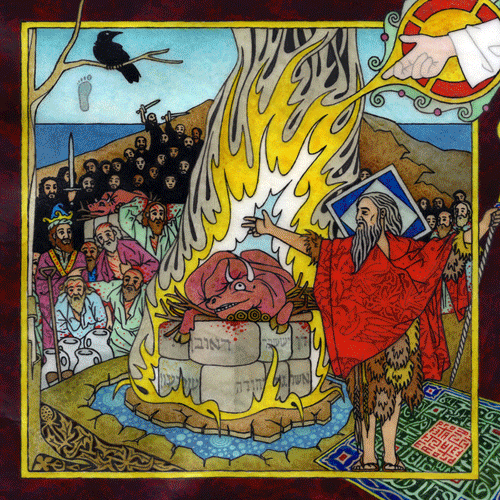
DEAR FRIENDS, PATRONS & BENEFACTORS:
I am currently working on a large drawing of the Annunciation for the Summula Pictoria that I hope to have finished before I send my next newsletter. It has been a long time since I have depicted this subject, and I am excited about how it is turning out so far. I am also happy to say that I am about three-quarters of the way finished with a second collection of poetry, which I plan to publish before the end of 2025.
For my new special sale, during the months of March and April, anyone who orders a giclée print, an original drawing, or a signed book through my website will receive for free a .pdf preview of seven poems from my new collection in progress.
Benefits for my supporters on Patreon and the patrons of the Summula Pictoria can be accessed here.
Yours faithfully,
Daniel Mitsui
March 2025
NEW DRAWING: IMMOLATION of ELIJAH’S SACRIFICE
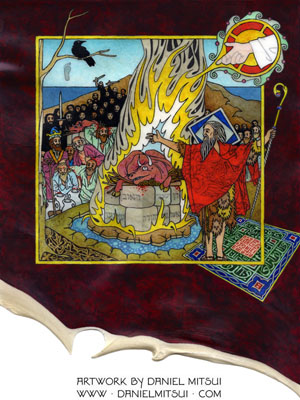
This drawing depicts the immolation of the Prophet Elijah’s sacrifice on Mount Carmel, as told in the eighteenth chapter of the Third Book of Kings. Click on the image above to read a full description of this drawing and its symbols — the square halo, the garment of skins, the little footprint, the raven, the carpet, the inscriptions on the altar stones, and the salamander in the damask pattern are all significant.
Prints are available on my website, here.
NEW DRAWING: SERVANT of GOD JULIA GREELEY
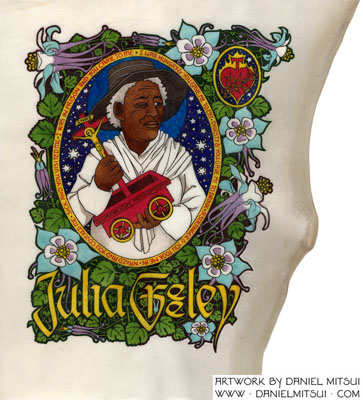
Servant of God Julia Greeley was born into slavery in Missouri in the early 19th century. She lost an eye from a slavemaster’s abuse. After emancipation, she settled in Denver, and was baptized into the Catholic Church in 1880. She became locally renowned for her deep devotion and her commitment to almsgiving. She used the money she earned as a cook and nanny to buy food, coal, clothing, and other necessities for the poor. She distributed her gifts from a red wagon at night. Her kindness earned her the epithet Denver’s Angel of Charity.
Only one known photograph survives of Julia. Since most existing artwork of her copies that image, I tried to imagine how she would look from a different perspective. I interpreted her little red wagon as the Chariot of Aminadab from the Song of Songs, which often appears in medieval art supporting a crucifix. I included an emblem of the Sacred Heart, one of her favorite devotions, surmounted with a Tau cross because she was a secular Francisican.
Because she did much of her charitable work at night incognito, I drew her against a starry background. I let the new moon stand in place of a halo, since she is not yet beatified. The surrounding ornament is composed of Colorado columbine, representing the place most associated with her, and the Holy Spirit.
Prints are available on my website, here.
NEW TYPEFACE: HILDEGARD
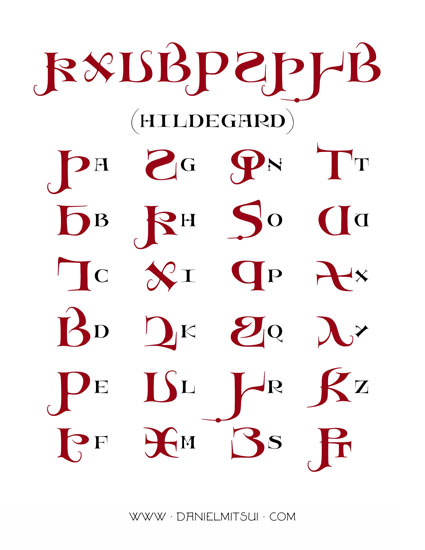
Hildegard is an original typeface for writing the Lingua Ignota, a visionary language invented by Saint Hildegard of Bingen. Its twenty-three letters are in the style of medieval Lombardic display capitals, to match my typeface Lux. It includes also a Latin alphabet and Arabic numerals.
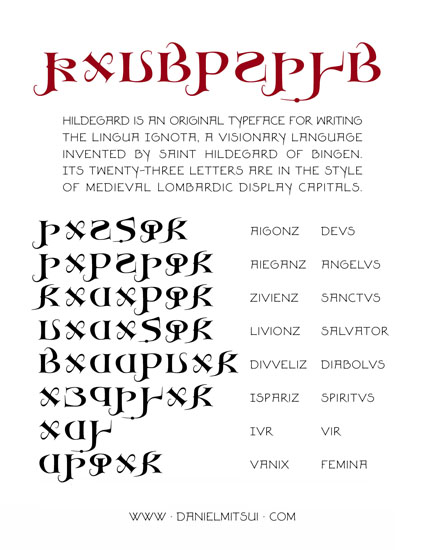
It can be purchased here for $20.
More of the typefaces that I have designed can be seen here.
INTERVIEW with The CATHOLIC CURRENT PODCAST
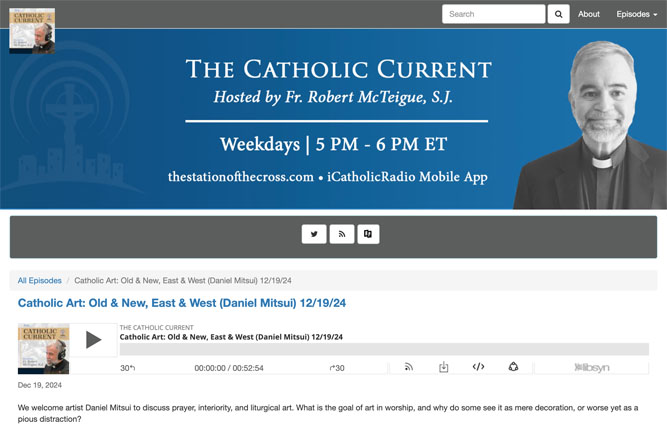
I was recently interviewed by Rev. Robert McTeigue of The Catholic Current podcast about various topics related to sacred art and worship. You can listen to the podcast here.
NEW CALLIGRAPHIC WORKS from the SHIH CHING
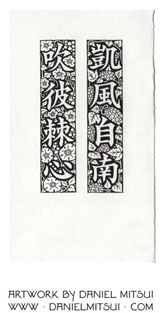
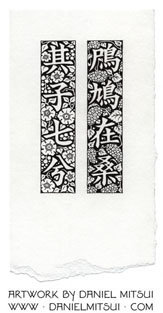
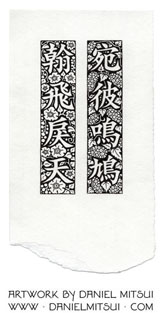
These are calligraphic treatments of lines from the Shih Ching, the Chinese Classic of Poetry. The Shih Ching includes 305 poems written in the 11th-7th centuries BC; its compilation is traditionally attributed to Confucius. I drew them in black ink on handmade paper, and surrounded the calligraphed ideograms with ornament of cherry and mulberry branches.
James Legge translated these lines as follows:
On that jujube tree the wind,
From the south, blows soft and kind.
See in the mulberry tree the turtle dove
Her seven young tending with untiring love.
The dove coos gently in the bush,
Then wings to heaven its flight.
My original drawings available for sale can be seen here.
A POEM from MY NEW COLLECTION
Here is an excerpt from The Wretch on the Gallows Tree: Rhymes and Carols by Daniel Mitsui, my debut collection of poetry:
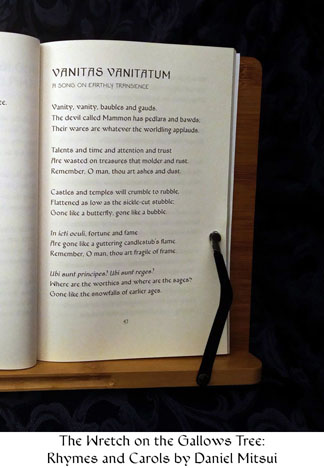
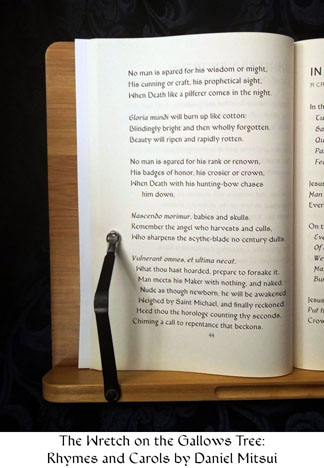
The collection includes forty religious poems on the life, death, and resurrection of Jesus Christ, following the sequence of the liturgical year. I designed the typefaces, ornament, and occasional illustrations used in the book. Signed copies can be purchased at my website. It is also available at Amazon. (This is the less costly option for readers outside the United States of America.)
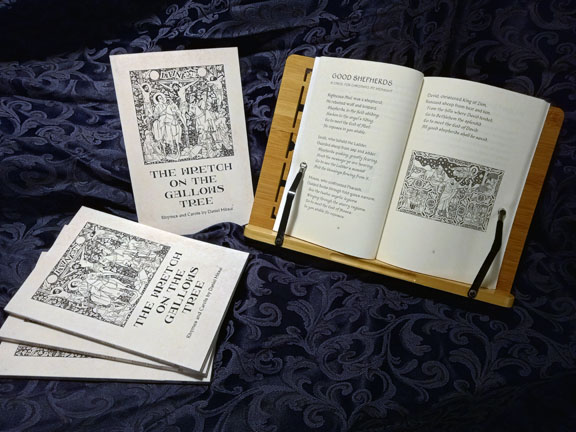
If you read this book and enjoy it, please consider leaving a rating or a review on Amazon or Goodreads.
ARTWORK for UPCOMING SAINTS’ DAYS
St. Juliana of Liège 4/6); St. Walter of Pontoise (4/8); St. Drogo of Sebourg (4/16); St. Anselm of Canterbury (4/21); St. George (4/23); St. Ibar (4/23); St. Mark the Evangelist (4/25); Our Lady of Montserrat (4/27); St. Catherine of Siena (4/29)
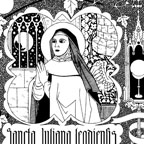
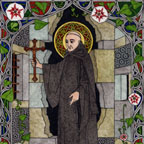
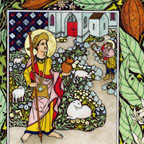
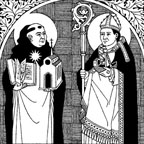
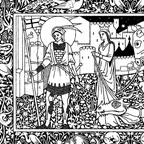
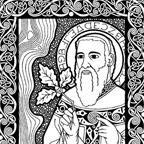
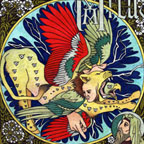
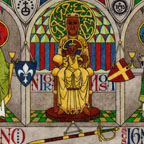
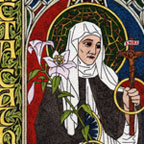
You can find more color prints here, and more black & white prints here.

























